Some artists wear smocks and dabble in oils or watercolors. Others don lab coats and gloves, and “paint” with a living palette of vivid bacteria.
Suffolk students Lily Johnsky and Domenic Abbondanza invited senior scientist Mehmet Berkmen and mixed media artist Maria Peñil Cobo of New England Biolabs recently to speak about their innovative work with bacterial art, including how -- and why -- they blend science and art to create living masterpieces.
“Bacteria are all around us, but many people think of them only in terms of rotting or disease,” says Berkmen. That misconception leads people to ignore the largely positive part the organisms play, from their key role in the planet’s ecology to each person’s own microbiome where bacteria make processes like digestion possible. Berkmen hopes to “replace disgust with knowledge through art.”
After learning about the evolution of this unique art form, students got to work on their own petri dish paintings in a lab in the 20 Somerset building:
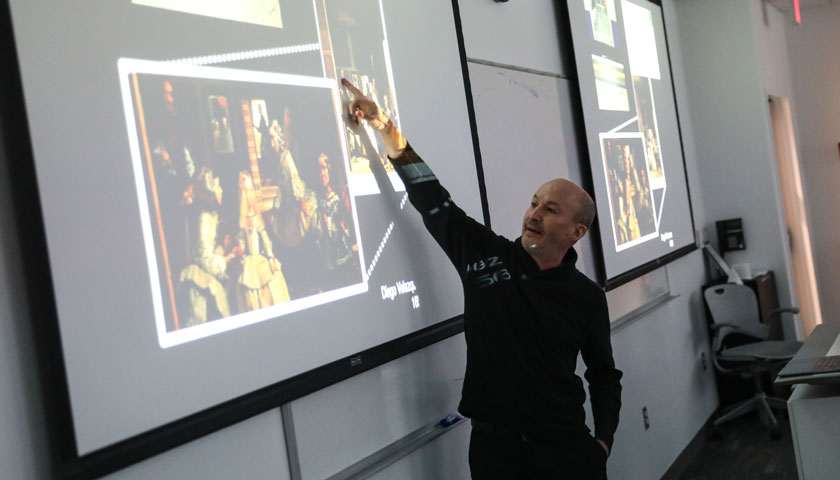
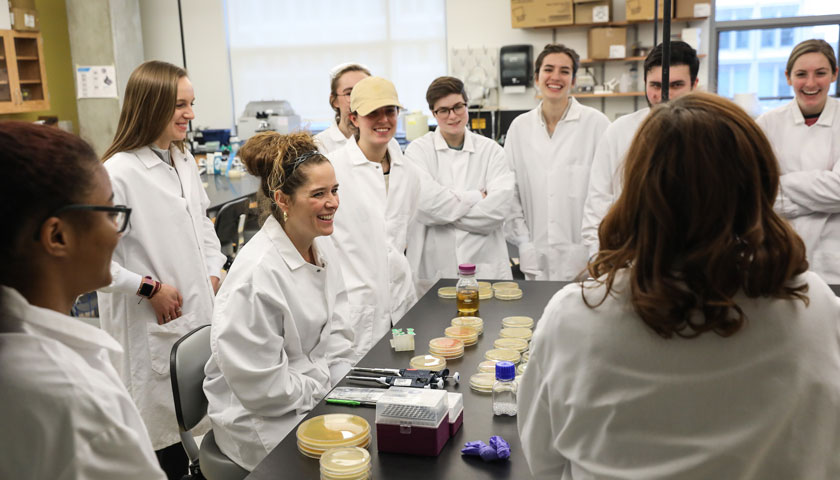
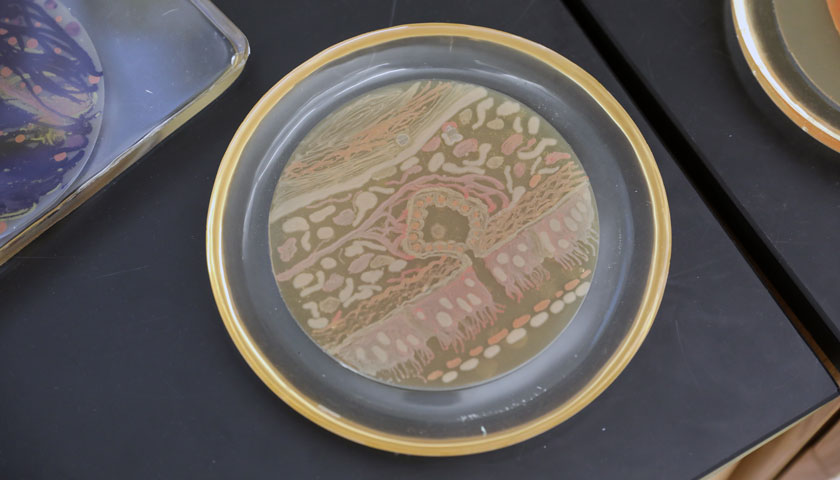
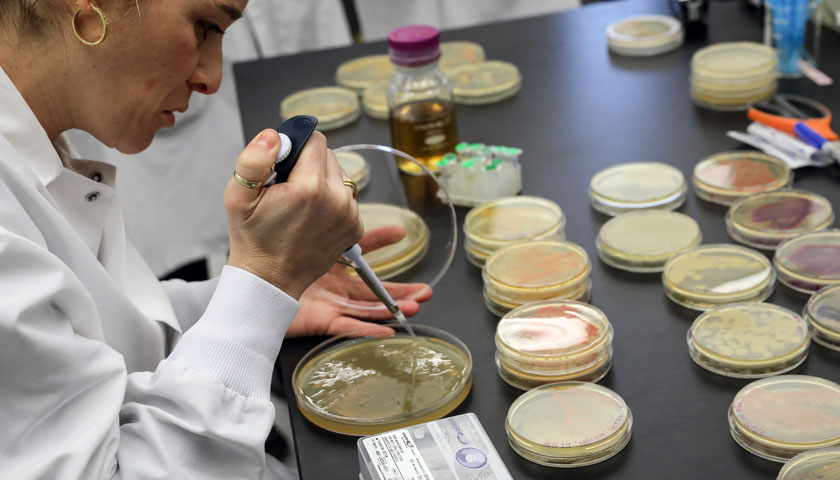
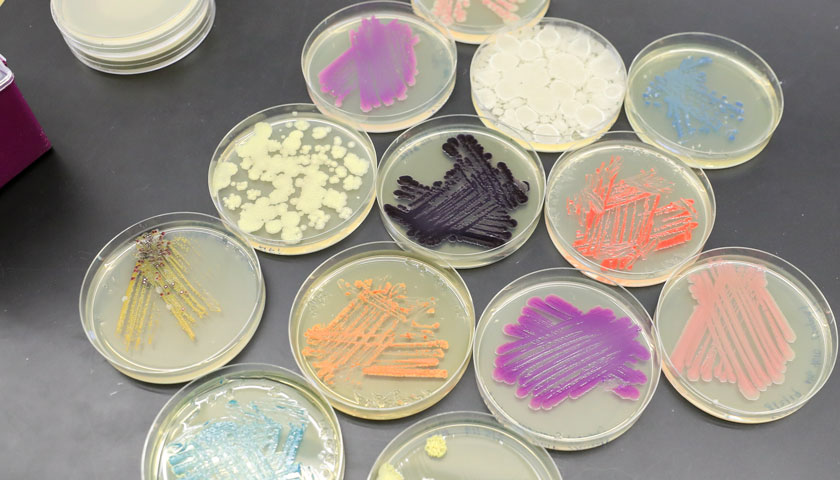
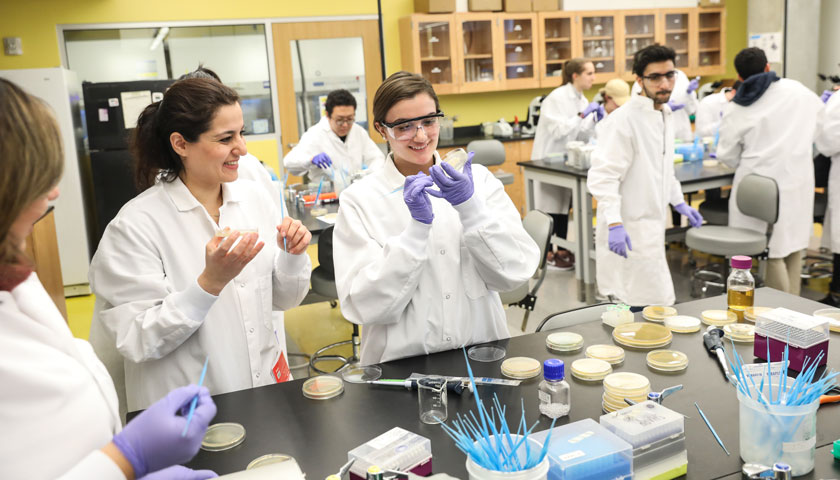
Instructor Atosa Ahmadi and biology and chemistry major Anna Athansopoulos, Class of 2020, create their own bacterial artwork.
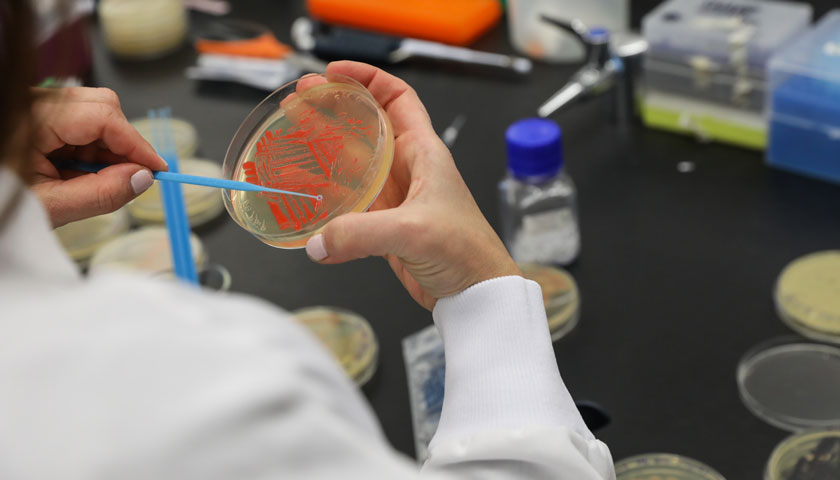
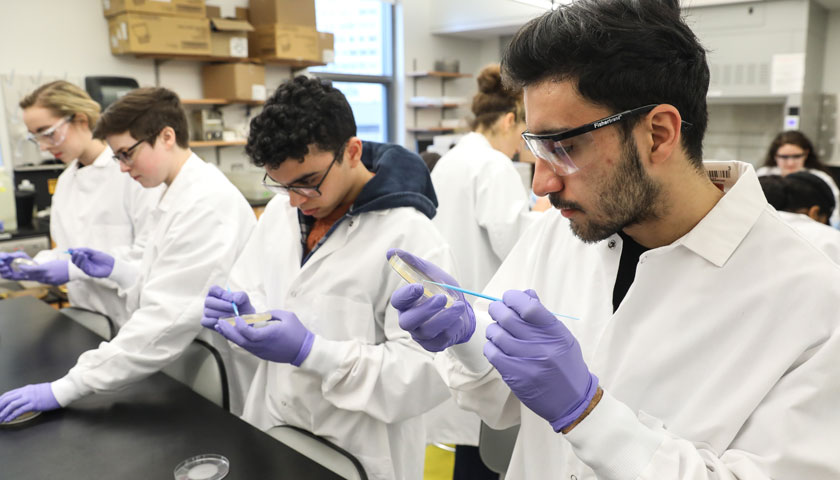
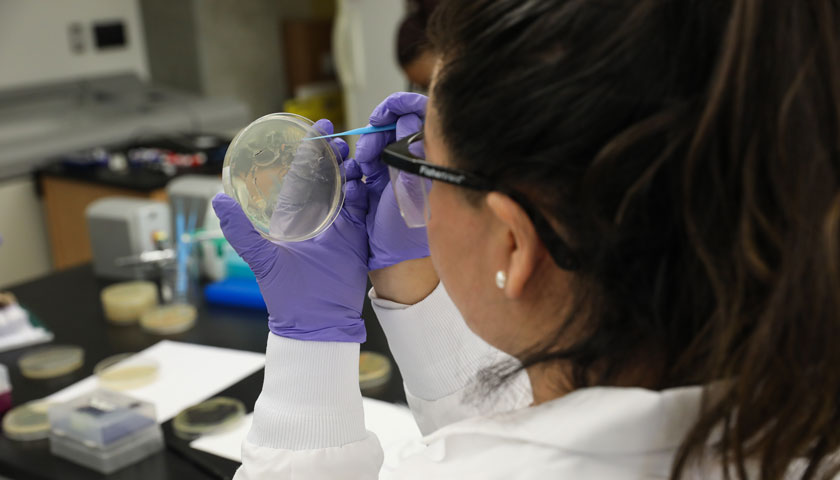
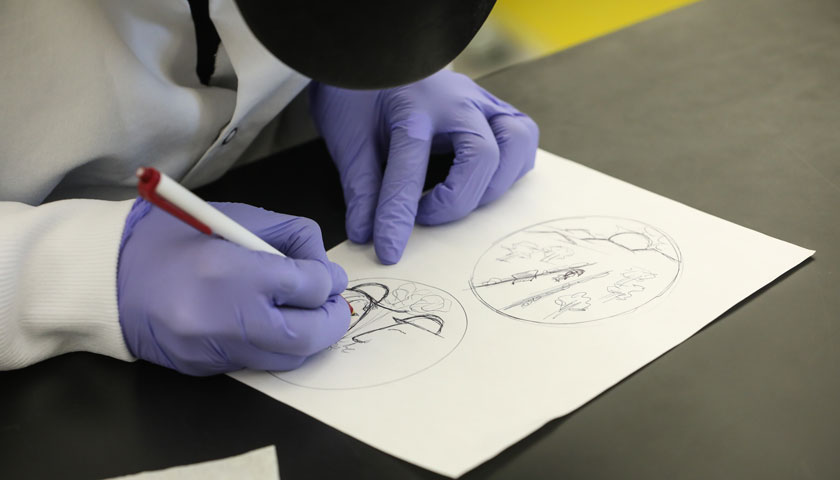
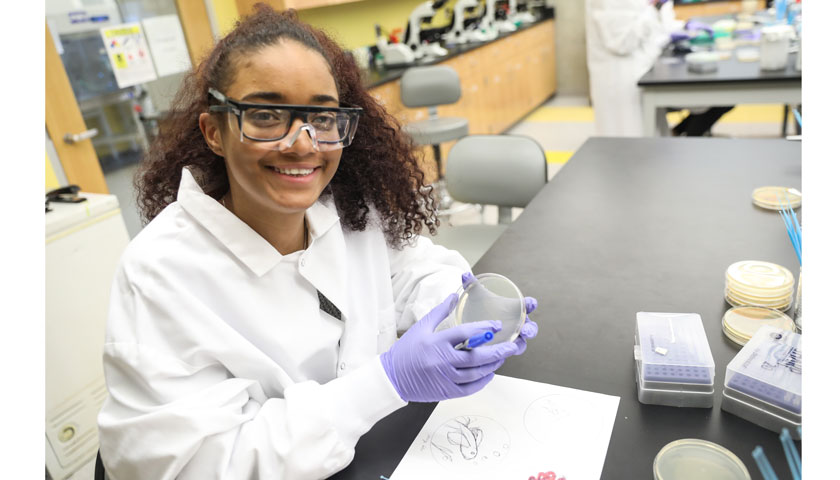
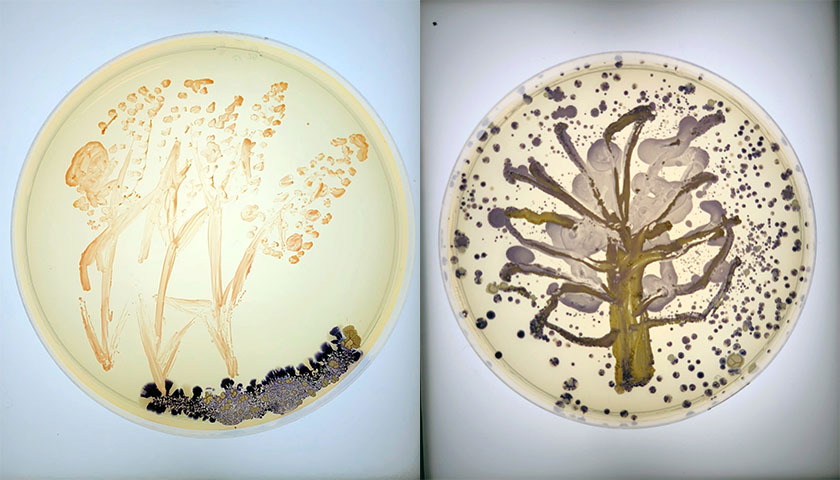
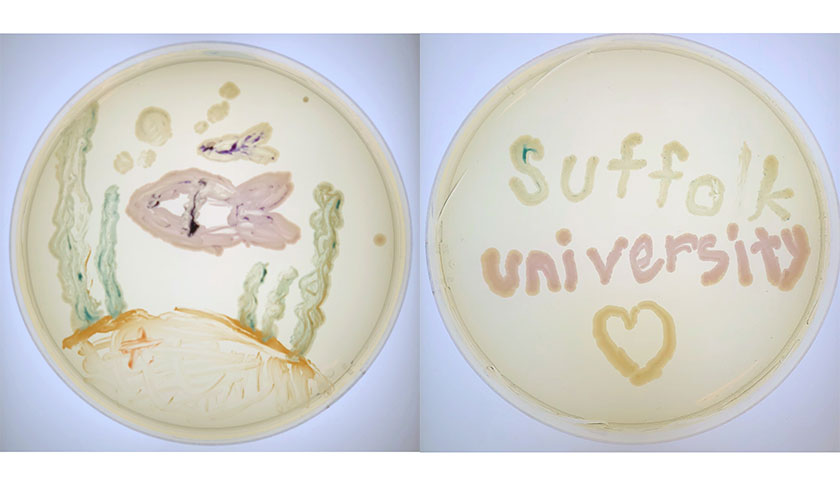
Contact
Greg Gatlin
Office of Public Affairs
617-573-8428
Andrea Grant
Office of Public Affairs
617-573-8410



